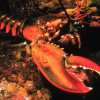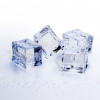Fly contain multitudes: a hidden world
Interview with
Do flies really have even smaller bugs living on them, let alone inside them? Zen Lewis is a scientist at the University of Liverpool who researches what's called their microbiota - and she's found that it has strange, unexpected effects on the way they behave. Phil Sansom found out more...
Zen - Definitions in this field are still somewhat contentious, but for me, the microbiome represents the genetic material comprising all of the microbes that are found on animals. It's somewhat different from what is also known as the microbiota. So that's the actual organisms themselves, the ecosystem of microbes, for example, on an animal.
Phil - When it comes to flies, they're very small already. Do they have little microbes living on them as well?
Zen - They do on and inside them. Microbes are found on pretty much everything. If you think about humans, some data came out a few years ago that suggested that there are 10 times as many microbial cells on a human compared to actual human cells. So we really are made of microbes in a way, and the fly is no different.
Phil - What organisms have flies got on them and inside them?
Zen - We've known for some decades now, from the 70s, that many, many insect species including flies, have what's called endosymbionts. Those are microbes that are found actually within the cells of the host species and they're found in flies too. More recently, we've started to examine how what's called commensal bacteria, microbes in the gut, for example, can impact on the host fly. Some bacteria is beneficial in terms of things like digestive processes, for example.
Phil - So are they breaking down food that the flies' bodies can't by themselves?
Zen - Well, let me give you an example. So something myself and my collaborators, Anne Lizé and Chloe Heys, have been working on recently is a fruit fly called Drosophila sechellia that is only found in the Seychelle islands. And it's evolved to be able to feed on a tropical fruit called Morinda or Noni. Now Noni is actually super, super toxic and pretty much kills anything else that goes near it. And yet this fly has evolved to be able to break down, to use this, this food source. And we've got some preliminary data which suggests that the microbes that these flies have in the gut are what in evolutionary history would have allowed this fly to adapt to this novel poisonous food source.
Phil - Wow. So what generally controls what kinds of bacteria are in there? Is it usually stuff like that, where it's some part of their evolution back in the past?
Zen - Yes. Evolutionary past certainly. Organisms also accrue microbes from the food that they eat, fecal matter that kind of is deposited with the egg as it leaves the female reproductive tract, and also in some species, microbes are literally transferred between individuals. So in some species of termites, older individuals will, in a nutshell, kind of feed younger individuals with the contents of their guts, which then allows them to be able to break down wood I think, I'm not a termite expert, which they wouldn't be able to do so unless they received those microbes from their nest mates.
Phil - Just to jump in here - and how do they receive those microbes from their nest-mates? Butt to mouth, my friend. Butt to mouth.
Phil - Insects are disgusting.
Zen - But they're also very, very cool.
Phil - So does that mean with all these different ways of getting microbes, there are thousands that you might find in one fly?
Zen - Many insects, including flies, actually have quite simple microbial ecosystems. So they tend to be characterised by two, three, maybe four main groups of microbes. And you tend to see similar groups of microbial organisms in the fly.
Phil - If the flies don't have the right composition or if they don't have gut bacteria at all, do weird things start to happen?
Zen - They do indeed. Some of my own work we've been examining kin recognition in fruit flies.
Phil - This is kin, like you tell who your brothers and sisters are?
Zen - Yeah, exactly. In the fly that we've been working with, melanogaster, they're unable to tell if another individual is closely related to them or not, and that's a bit dangerous because, you know, if you mate with a brother or sister, you're potentially going to have poor quality offspring. However, if we disrupt the gut bacteria, which we do very simply by lacing the food with antibiotics, the flies then become able to recognize kin.
Phil - That is so strange.
Zen - It's very, very weird.
Phil - What do you think is going on?
Zen - Well, what we think is that because in flies they have this kind of scent signal, you know, like pheromones in a way basically, that signal is produced by these small organs called oenocytes. Now the functioning of the oenocyte operates via cues that come from the gut. So we think that by disturbing the bacteria, knocking out the bacteria, we're changing the action of the gut, which in turn changes the action of the oenocytes which are producing the scent signal. And so flies are giving off different signals compared to if they were normal.
Phil - Is this generally the kind of thing that people find when they look at these microbiota, that they have these weird effects that you wouldn't expect at first glance that are actually quite important?
Zen - That's what we're increasingly finding. I mean previously, a lot of research that was done about microbes was from a pathogenic perspective. So microbes causing disease and it's only now that we're starting to see that actually they have much, much wider impacts on their host's behaviour, biology and indeed evolution.
- Previous New virus appears in China
- Next Will it sequence: a tube of flies










Comments
Add a comment